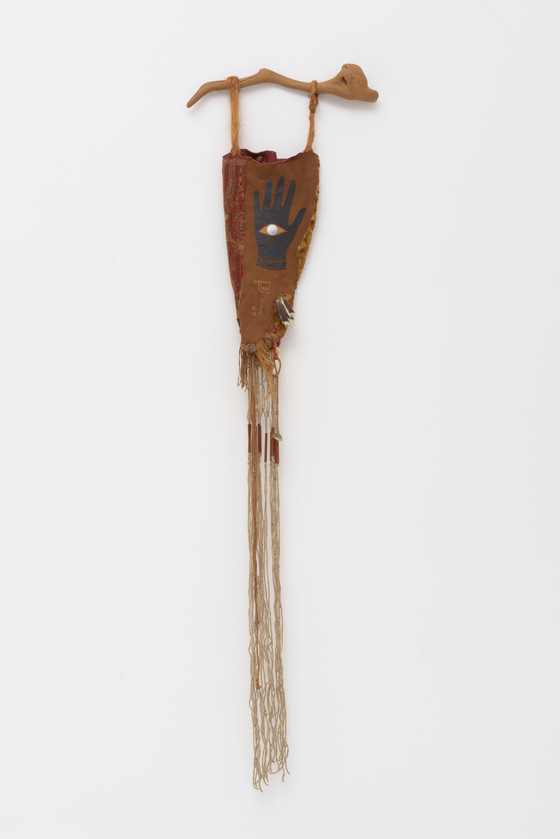Mojo Bag #1 Hand

© Betye Saar, Courtesy of the artist and Roberts Projects, Los Angeles, California; Photo by Robert Wedemeyer
Please log in to add this item to your gallery.
View comments
No comments have been posted yet.
Add a comment
Please log in to add comments.
Please log in to add tags.
* Nearly 20,000 images of artworks the museum believes to be in the public domain are available to download on this site.
Other images may be protected by copyright and other intellectual property rights.
By using any of these images you agree to LACMA's Terms of Use.
Mojo Bag #1 Hand
Sculpture
Mixed media assemblage
62 × 17 × 2 in. (157.48 × 43.18 × 5.08 cm)
Purchased with funds provided by Alice and Nahum Lainer, the Modern Art Acquisition Fund, the Modern and Contemporary Art Council, the Laurie M. Tisch Illumination Fund in honor of Betye Saar and Steve Tisch, Francis H. Williams and Keris A. Salmon, H. Allen Evans and Anna Rosicka, and Kim and Keith Allen-Niesen (M.2019.286)
Not currently on public view